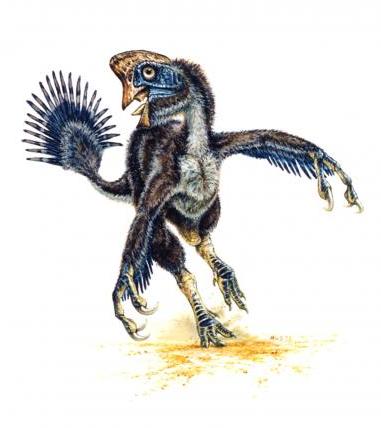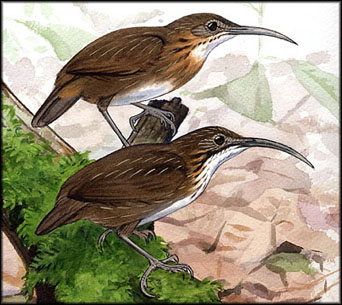
September 6, 2006
Everytime a news items appears about a "new species," of course, it seems it might be another exciting moment for cryptozoology. The new species could be one that is ethnoknown, a part of the traditions and encounters of the local peoples who may have assisted in finding it.
But some media reports might not be talking about the discovery of a brand "new species." Sometimes reporters are only disseminating the fact that a "new" animal, perhaps never seen locally, is making a new appearance. Often, if the location has a bit of exotic mystic about it, people naturally think this is a new species overall.
The recent news out of Nepal of the seemingly new finding of a "new bird" is just such a case.
Beginning on September 3 through at least news dispatches dated from September 6, 2006, wire services distributed a story headlined "New Bird Species Reported In Nepal." The story told of a new bird species having been sighted at the Koshi Tappu Wildlife Reserve, Nepal. The bird (pictured below) seen was a red-breasted flycatcher (Ficedula parva).

However, the reality is that the finding is of a new species for Nepal specifically, not a new discovery within zoology. The headline was somewhat misleading.
Sometimes the animal might be celebrated as a new species, but it might be a new fossil species only. An example of such a case that received a lot of publicity was the find of the fossil birdlike carnivorous dinosaur, Hagryphus giganteus, announced in April 2006. The 7-ft-tall Late Cretaceous avian-like dino (below) was found in Utah, and became something of a media celebrity for a few days. People love their dinosaurs, and a giant one that looks like a bird certainly has appeal.

(Illustration by Michael W. Skrepnick.)
Infrequently the new animal is absolutely new and known to be living today. For instance, the Naung Mung Scimitar-Babbler (Jabouilleia naungmungensis) was discovered in the pre-montane rainforests of northern Myanmar (Burma). The discovery of these birds (pictured below) was made in February 2005, but not announced until April 2006. The birds, besides living in northern Myanmar, may live in similar habitats that extend westward into regions of Myanmar and Assam, India, and to the east into Yunnan Province, China.

(Painting from the cover of the Auk.)
So next time you read about a "new species," just make certain it’s really a new discovery.
About Loren Coleman
Loren Coleman is one of the world’s leading cryptozoologists, some say “the” leading living cryptozoologist. Certainly, he is acknowledged as the current living American researcher and writer who has most popularized cryptozoology in the late 20th and early 21st centuries.
Starting his fieldwork and investigations in 1960, after traveling and trekking extensively in pursuit of cryptozoological mysteries, Coleman began writing to share his experiences in 1969. An honorary member of Ivan T. Sanderson’s Society for the Investigation of the Unexplained in the 1970s, Coleman has been bestowed with similar honorary memberships of the North Idaho College Cryptozoology Club in 1983, and in subsequent years, that of the British Columbia Scientific Cryptozoology Club, CryptoSafari International, and other international organizations. He was also a Life Member and Benefactor of the International Society of Cryptozoology (now-defunct).
Loren Coleman’s daily blog, as a member of the Cryptomundo Team, served as an ongoing avenue of communication for the ever-growing body of cryptozoo news from 2005 through 2013. He returned as an infrequent contributor beginning Halloween week of 2015.
Coleman is the founder in 2003, and current director of the International Cryptozoology Museum in Portland, Maine.
Filed under Breaking News, Cryptotourism, CryptoZoo News, Cryptozoologists, Cryptozoology, Evidence, Expedition Reports, Extinct, Eyewitness Accounts, Forensic Science, New Species